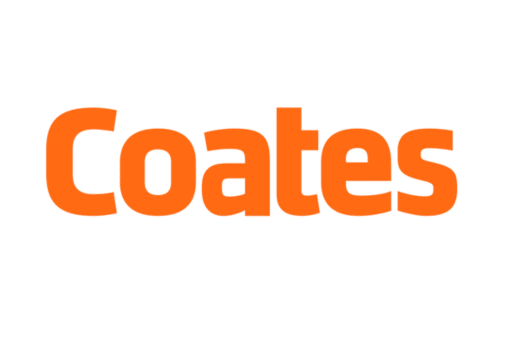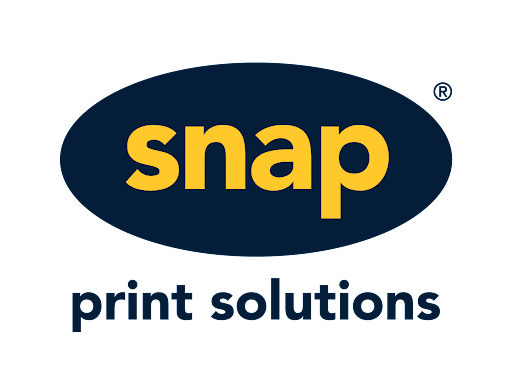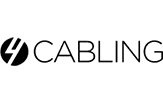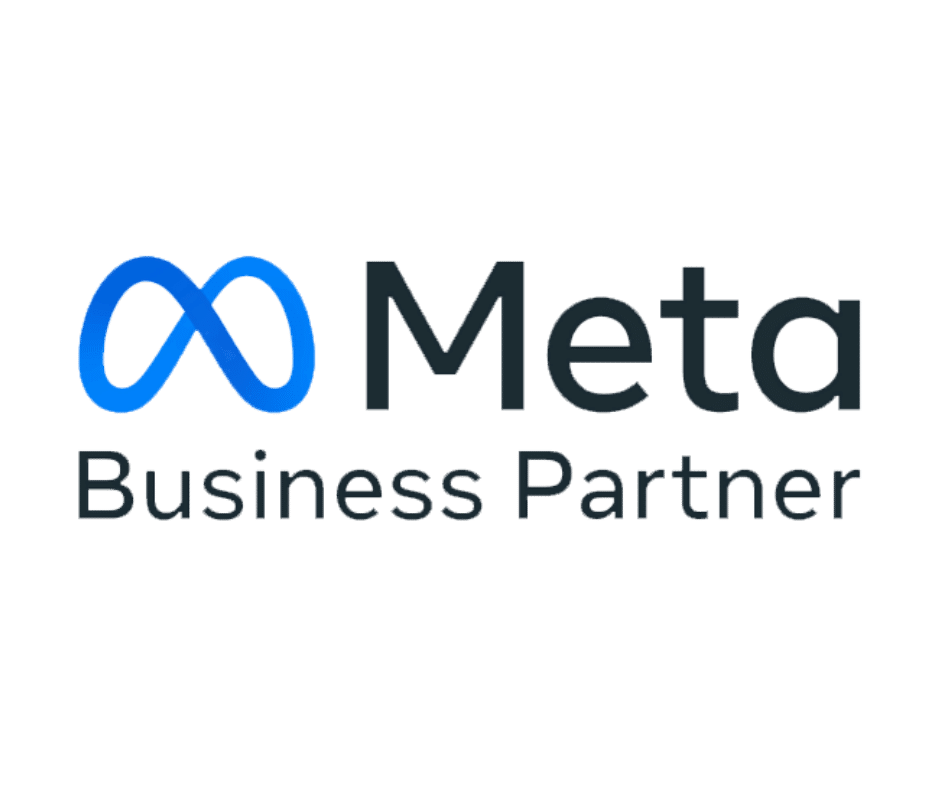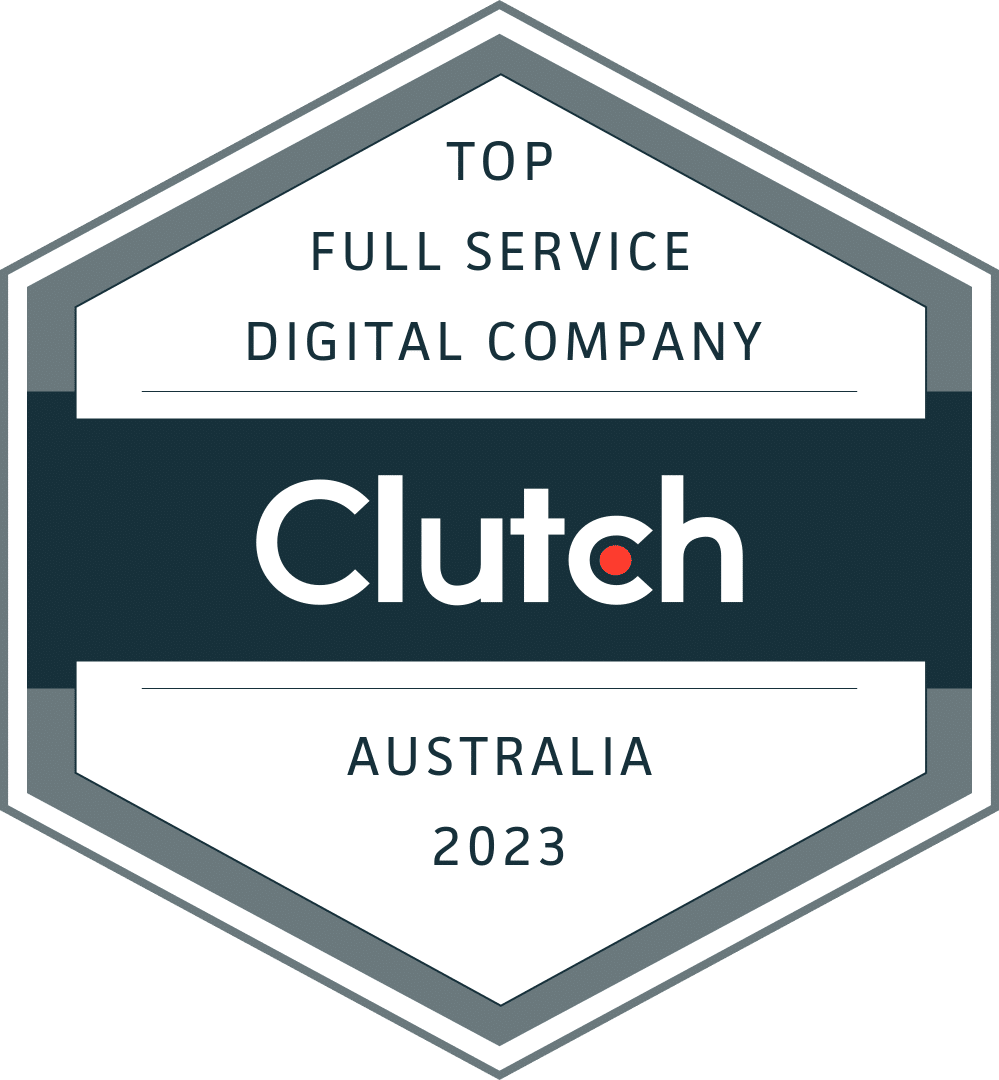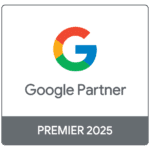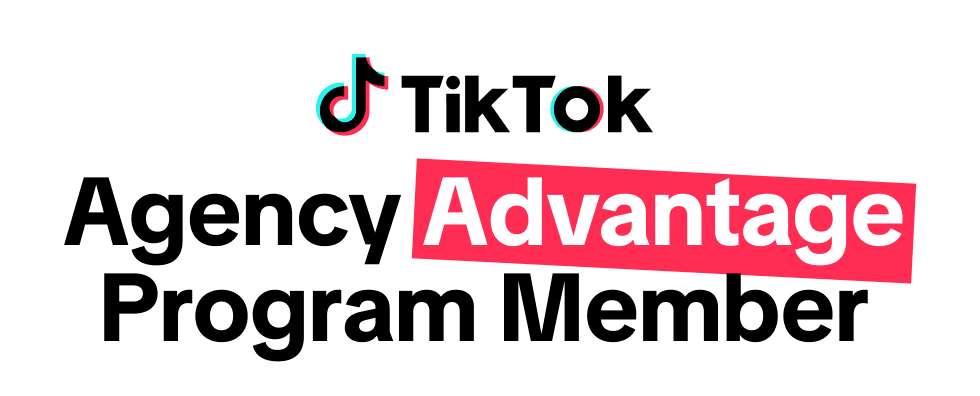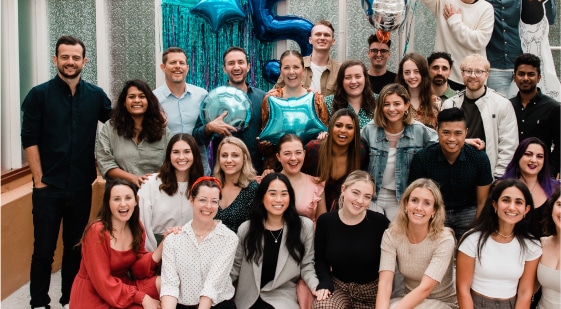Answering Your Marketing Questions for 2024
Episode Description:
James Lawrence answers your top 9 questions for marketing in 2024: What channels should you be playing in? What are the biggest challenges marketers are facing? How are customer journeys changing and how can you best measure results? Listen now.
Key Takeaways:
- How has the marketing landscape evolved in the past year, and what trends should marketers be aware of in 2024?
- What are the 3 biggest challenges you see marketers facing in 2024?
- Any advice on social media platforms outside of the mainstream LinkedIn and Meta?
- What is the future of email marketing, and how can businesses keep their email campaigns effective and compliant with regulations?
- Are creatives that important? Any tips for delivering good creative and messaging?
- How can businesses effectively measure the ROI (Return on Investment) of their marketing campaigns, especially in a multi-channel marketing environment?
- What is some good content to stay up to date on marketing trends?
- With so much change happening in the industry, what are the fundamentals to focus on getting right?
- How do marketers influence Senior Leaders to understand what’s happening at the moment?
Featuring:
About the Guest:
Kayley is the Marketing Coordinator at Rocket Agency, and works with the team to deliver insightful and informative copy, organise their webinar events, and manage the company’s organic social channels. She also produces the Smarter Marketer Podcast. Follow her on LinkedIn.
Podcast Summary: Top Marketing Questions for 2024
B&T Marketer of the Year Finalist, James Lawrence, answers your most pressing marketing questions to help your business stay on track and make informed decisions in 2024.
2023 was a year of change in the marketing industry - the economy slowed down, budgets were readjusted for many businesses, and there continues to be a lot of pressure placed on providing and demonstrating a return on investment. Given this pressure, marketers tend to invest more in short-term marketing to drive demand in the interim, rather than investing in the more appropriate long-term marketing activities to secure future marketing results.
Here are the key trends and opportunities you need to keep in mind when setting budgets and planning your marketing activities in 2024, which will ultimately allow you to reap the benefits in twelve months’ time.
1. How has the marketing landscape evolved over 2023, and what are the key trends marketers should consider in 2024?
Generally, a lot remains very consistent. Google still drives over 95% of search traffic across Australia, whether that be paid or organic. There was previously hyperbole around the ‘death of Facebook/Meta’, but from our experience working with clients at Rocket, Facebook continues to be a major source of leads and revenue. TikTok continues to grow from an organic point of view; there is an average of 19.6 hours spent in-platform in Australia (source), and it’s proving valuable as a channel to gain cost-effective impressions.
In terms of the big trends for 2024, AI will continue to help us as marketers become more efficient and streamlined in our roles. It won’t steal marketers' jobs, however, it will likely shift how we do things. TikTok will likely continue to grow, especially in the rise of ‘social search’ where users may turn to TikTok or Instagram where they once might have turned to Google for the same answers, and outdoor media advertising will continue to grow both digitally and via Programmatic.
2. What are the three biggest challenges marketers are facing?
1. Measurement and attribution
Digital began as a challenger to the idea that; ‘half of my marketing budget is wasted, the problem is I don’t know what half’. The idea of being able to track touch points, user journeys and attribution models originally held some degree of certainty when it came to data and decision-making. However, it’s just not like that anymore. One of the major contributing factors to this is that a path to purchase in most organisations, especially those with long buyer journeys, is infinitely complex. It’s online, offline, multi-device and multi-stakeholder, and not all of the data in Google and other analytics platforms is completely accurate. It’s vital to lean towards being data-informed, not purely data-driven.
2. Pressure to invest in short-term over investing in long-term brand building
95-97% of your ideal target market is not ready to buy at the present moment. The problem is that most marketing budgets are spent targeting the 3-5% who are ready to buy and dismissing the potential for longer-term brand building and priming your audience. Binet and Field’s, ‘The Long and the Short of It’, delves into the value of investing in brand building for future growth and sustainability, and how long-term marketing can ultimately generate more money for your business. The recommendation is to spend 60% of your marketing on top-of-funnel activities, while spending 40% on bottom-of-funnel performance-driven activities.
3. The pressure of doom-scrolling and the threat of AI
While LinkedIn fosters a community of collaboration and learning, it is also subject to heavy doom-scrolling, where it can feel like you’re falling behind or doing things ‘wrong’. This is not constructive. Rand Fishkin has a fantastic quote I encourage you to consider; ‘what is happening in the marketing world is generally less important than what’s happening in your world’, especially in the case of AI, ChatGPT and Google Bard. How we are using AI is going to be vastly different in a year’s time to compared to now, so it’s important to be alert but not alarmed.
3. Do you have any advice on social media platforms sitting outside of the mainstream Meta and LinkedIn ads?
We are moving into a slightly more fragmented landscape as it relates to digital media.
For a while, there was the perception of Google being solely responsible for search, Facebook and Instagram veering towards the B2C side, while LinkedIn was heavily B2B-focused. However, the way that programmatic is developing, the access to high-quality inventory with PVOD and digital out-of-home, in addition to rising platforms such as Spotify, YouTube, Pinterest and now Tiktok, we have more decisions to make as marketers in terms of which platforms we should be investing in and how to best reach our audience.
It’s also important to consider how, just because most people are on these platforms, it doesn’t necessarily mean Meta or TikTok or LinkedIn are the best (or even the right) places to promote your brand and drive action. It all comes to down to knowing the nuances of your buyer journey, your ideal customer’s attitudes and behaviours, and the type of messaging and creatives that will resonate with them.
4. How can businesses keep their email campaigns effective and compliant with regulations?
The eConsultancy survey shared every year evidences email marketing as the channel that provides the best return on investment, and every year it’s underinvested in by Australian marketers. More importantly, now as privacy changes continue to grow and first-party data becomes more crucial, you need to have your own database of contacts that you can nurture. (Read: Why Growing Your First-Party Data is Crucial)
You should be able to segment your database based on a variety of factors in order to drive personalisation and curate an automated and considered interaction with your brand from the moment a user joins your database. This segmentation could include their stage in the customer journey, what types of products they are purchasing, or their whether they’re a tier 1 client etc.
It’s also a great channel to balance short-term and long-term marketing efforts. You have the option to send sales-oriented emails promoting your latest offers and products, as well as continuously connecting with your audience, keeping them engaged, and maintaining your brand as top of mind.
5. Tips for how businesses can deliver good creative and messaging to transform their current assets and campaigns.
An excellent Neilsen study came out in 2017 that revealed what factors had the greatest impact on the success or otherwise of a campaign - creative was the most important variable at 47%.

If you’ve nailed your targeting, budgets, and messaging, but aren’t seeing tangible results, then maybe your creative needs a solid refresh. At the same time, keep in mind the age-old saying of; if it’s not broken, don’t fix it. Changing your creatives drastically and too regularly can be more of a hindrance to your brand than it would be a benefit.
Your creatives need to be highly contextual. They should speak to all of your channels and overall messaging to inspire, captivate, and ultimately drive action from your audiences. It’s also not a one-size-fits-all approach either. Avoid ad fatigue - don’t take your creatives from YouTube Ads and then use the same video across Instagram Ads, TikTok Ads, LinkedIn Ads and Facebook Ads and expect it to drive the same impact.
6. How can businesses effectively measure their ROI, especially in the multi-channel marketing environment where you often don’t know where people engage with you?
In mid-2023, Google moved from Universal Analytics to Google Analytics 4. While this initially brought with it a myriad of challenges for marketers comparing year-on-year data, it effectively combines AI and machine learning in an attempt to snapshot what a buyer journey looks like for your website. While it’s a great place to start, as we mentioned earlier, it should not be your single source of truth. It is your responsibility to go into the platform and compare Facebook’s numbers with the data in GA4, for example. Have your sales team and customer service team ask your customers how and where they found you. Turn to social media comments, listening tools and brand uplift studies.
You need to be aware of the limitations of data.
While you may be able to measure what’s happening on paid social, paid search, and email marketing channels, you are missing out on what’s happening offline, or even online activities that can’t be measured, such as podcasts and videos.
Start with the viewpoint that you actually can’t measure most actions, so anything you can measure is a bonus!
7. Are there any good books or courses that are great for marketers or business owners wanting to stay up-to-date in the industry?
Here’s a list of great marketing resources that you should consider:
8. With so much happening in the industry, what are the fundamentals that marketers should focus on to get their mix right?
It’s hard. As an in-house marketer, you already have what feels like a million things on your plate, and are trying to balance them all under both budget and macro constraints.
You can view this in one of two ways; as terrifying, or that ‘change’ is a constant and there’s plenty of opportunity to do great work.
At the end of the day, you need to do what is right for your business. Focus on your targets and what you can achieve this quarter/year, whilst also keeping an open mind. Working with an agency to support your marketing efforts can also be effective in relieving the pressure in-house, and having specialists take charge of improving your channel performance. At the end of the day, if you can get something done to a high degree of competency in-house, you should be doing it in-house. And then you want to use your agency partners for things that they're experts at, or you can't do yourself due to economies of scale or budget.
9. How can you influence senior leaders or your C-suite to understand key digital trends and best practices?
If you’re a senior marketer, it is your responsibility to educate your stakeholders and non-marketers in the business as to how marketing works. It is our job to understand the processes and be the market’s voice in the business.
However, explaining difficult concepts that might receive pushback isn’t effective in periods of stress where you needed leads yesterday. These are the conversations you have to initiate before the going gets thick - weeks if not months before budgets are set - and in quiet times of the business where stakeholders can absorb and understand that information.
Overall, go back to the basics - reach the right person at the right time, and do what you can to hit and even exceed your targets in the next twelve months. Make smart and informed decisions now, from which business will reap benefits in the future.
If you’re not getting great marketing results, or want to get a second opinion on how you can level up your digital strategy and channel performance, get in touch.
Transcript
James Lawrence: I'm here today with Kayley Melham. Kayley, welcome back.
Kayley Melham: Thanks for having me again.
James Lawrence: Always fun doing episodes with you. So Kayley is the resident smarter marketer in-house marketer. She essentially is the lady behind the podcast. She organises it, she cajoles our guests. She puts together the questions and directions and intros and deals with me missing things and turning up late and changing my mind on stuff. But I think our two pods that we've done together have been the top listened pods. Is that right?
Kayley Melham: Yeah. I feel quite flattered.
James Lawrence: Well I'm the only constant in all the pods. So therefore it means that it's because of you, not because of me that those two pods have ranked so well. We had an episode last year, that was the top marketing questions for 2023, and I think that might actually have been the number one ranking most listened pod of the year. So we thought, let's do it again. Let's go around for one more year. How have you decided to approach this?
Kayley Melham: Well, we recently ran a webinar on digital marketing in Australia in 2024, and we had some really good questions coming in from a lot of the registrants to the webinar. And I thought, what’s better than to answer some of those questions on the pod, as well as just some general questions and ideas that are running around in the industry. So to kick it off, first question - this is maybe the easiest or could be the hardest - how has the marketing landscape evolved over the past year, and what do you think the trends are that people should consider in 2024?
James Lawrence: I think I always find the general ones really hard to answer. So the webinar was for B&T. We had about 800 people registered for the webinar, so we actually did get loads of questions and lots of commonality, which I think is good. I think in terms of what marketing has looked like in the past year in Australia, it's been a year of change; the economy slowing down, I think in many parts has kind of had an impact on marketers or I think when budgets and panels get tight in businesses, I think often marketing is one of the first things that gets questioned. So I feel that in lots and lots of industries and lots of businesses with the marketers that we speak to, there's been a lot of pressure on budgets this year, a lot of pressure on proving and demonstrating return on investment is challenging. And I think it then often does force marketers hands to try to be doing short term marketing that drives demand and performance in the short instance, rather than investing maybe in the most appropriate marketing for their business. But that's probably a slightly separate issue.
James Lawrence: Macro - lots hasn't changed, right? Google still drives 95% of search in the country, whether it's paid or organic. Most businesses get most of their traffic from Google. I think we've had a lot of hyperbole around the death of Facebook. Like it's still definitely for all the clients that we run at Rocket. And basically everyone I've spoken to, Facebook outperforms TikTok ads in terms of driving revenue and performance and leads. Not to say that the massive rise continued rise of TikTok hasn't shaken things up. I think particularly from an organic viewpoint, we haven't got the updated TikTok numbers of users. I think it was 8M in Australia earlier in the year, so it'd be fascinating next year what we see there, and fascinating as to what the ad spend is in that platform, but we're seeing huge amount of time being spent in that platform, but definitely kind of seeing it as a place of getting cheap impressions if you're running organic, potentially getting lots of virality with your content. Lots has remained the same.
James Lawrence: LinkedIn is a core social platform for B2B. Google driving search, Instagram, Facebook, TikTok depending on what sort of business and client you're trying to hit. But I think in terms of the big trends for next year, AI will continue to help us as marketers to do our jobs better. So much of what we do in the agency is the same now as what it was 12 months ago before we were using AI. So much of it is different. I don't see it as stealing marketers jobs. If those marketers are embracing ChatGPT and Bard and other platforms. So I think we'll obviously see massive leaps forward in that space. It'll change how we do things. I think in terms of the actual marketing environment in the country as it relates to digital, I think we'll continue to see TikTok growing. I think we'll see the continued rise of social search where it hasn't heavily eroded Google's volumes that I've seen, but people turning to things like TikTok to actually search for products and services where they once might have turned to Google. I think we'll continue to see outdoor media continue to grow in terms of seeing it being bought digitally and programmatically. And then I think the economy is - I'm far from an economist - but so we'll see how things go there. Every year there's a sector doing well. There’s a sector that is not doing well. You wouldn't predict it to be kind of this boom. 12 months for marketers with hugely increased budgets and less scrutiny on performance, I think we're going to say probably more of that. But yeah, that's kind of how I'd see things.
Kayley Melham: And then off the back of that, I think talking about trends is one thing, but challenges are a kind of different area. And I know that you spoke about this in the webinar, and I found these three points also to be really super relevant and a lot of them challenging. I feel what is said in the industry in terms of attribution and AI and what have you. So what would you say the three biggest challenges are marketers are facing?
James Lawrence: That's it. We put a lot of thought into the content for that webinar because it was a reasonably sized audience. And we broke it down into three challenges. Which are the three that when prospective clients come to Rocket, they're often raising with us; we're struggling with this, or lots of pressure is being put on us in our job because of that. The first one is measurement, right? Digital started as this whole challenger to that adage in marketing, which is; I know half my budgets wasted, I just don't know which half. And Google ads and paid social to some extent 10-15 years ago, you could kind of demonstrate to a business spend X, get Y, keep pumping, money into digital and we can prove return. It's just not like that anymore. We've kind of got probably a few different things taking place there. I think one of that is just attribution and the reality that the path to purchase in most organisations, and most businesses is complex. It's online, it's offline, it's multi-device, it's multi-stakeholder, and marketers and probably less marketers and more business owners and other stakeholders think that all the data that they're relying upon in Google and other analytics platforms is completely, 100% accurate and right. And it's just not.
James Lawrence: Attribution is nearly impossible for the vast majority of businesses. I think some e-commerce businesses in really transactional spaces, some service businesses in really transactional spaces. I think you can get a high degree of certainty around what return your spend is bringing you. But most businesses, most marketers, most business owners I'm speaking to, if they're saying I'm going to make every decision based on data, I kind of challenge that assertion pretty vocally and pretty strongly. And so that's just the attribution piece is missing for basically all businesses, and it will never be solved perfectly. And I'm happy to argue that with anyone. And then we look at privacy and the way that privacy changes, the fact that Google is starting to move to a cookie-less world, we're going to see from January onwards that 1% of Chrome users in Australia will move to cookie-less. We look at all the issues around iOS and and tracking there where we can't tell if someone's opened up an email anymore from HubSpot or campaign Monitor and MailChimp, and Google doesn't pass information through like it once did. So measurement is challenging. It's only going to get worse. That's the reality of it. It is more about us better understanding what data can do for us and what it can't. It's about marketers educating themselves and more importantly, educating non marketers as to the data you're looking at has lots of imperfections. And that's okay. It's better than what we probably had 30 years ago. But don't rely on it solely.
Kayley Melham: I think the point that I like that you brought up in recent episodes before is the idea of being data-informed and not data driven, like having that balance of; I'm using it to help inform the decisions that I'm making. But it's not everything. It's not the be all and end all. And I'm not going to completely change my budget or my tactics because it's not telling me exactly what I want it to.
James Lawrence: 100%. If anyone in your business says, we're going to make all of our decisions based on data, then you tell them that you're going to make terrible decisions. That's the reality of it. And I think most marketers are getting to that point. The second point probably segues nicely into it. And for me, that's this continued pressure on marketers to invest in short term marketing over investing in marketing that is actually going to work for the business. The more pressure that gets put on budgets, the more that dynamic exists in businesses. So we see all the time marketers coming to us; hey, good news, we've got 300 grand to spend in the next three months on this huge campaign to drive leads, and you kind of speak to them and go, well, what's the buyer journey? How does it look? And it's a four year buyer cycle.
James Lawrence: 97% of that market isn't in market at any moment in time, but procures those services. So we're trying really hard to educate clients and prospective clients to look at the 95/5 rule, the reality that most of your customers are probably not in market at this moment in time. And then the 60/40 rule around what percentage of your marketing budget should go into long term marketing activities, what percentage should go into performance and short-term activity? And helping them explain in a data driven way to the wider business that it's not how marketing works. The long and the short of it, which is an awesome book by a study by Binet and Field, which we're kind of advocating that our clients take that to C-suite and sales teams that are saying everything should be in this bottom-of-the-funnel stuff. So I think that pressure on short term results often in environments where they're just not going to come. So just how do you better educate and set your business up for long term success?
Kayley Melham: So one of my favorite points is the; only invest in the short term, you're only going to get the short-term results. Whereas if you invest in long term you can have the benefit of sustainability as well as that short-term surge.
James Lawrence: It's not just marketing theory, right? We say in the agency every day, the clients of ours that have the mix right, that have the investment in long-term activities, they just generate cheaper leads. They close leads faster. I think it's a big one for me. And I think the third one - we've talked about it a lot, right? And I think as marketers we're probably a bit sick of it. But it is, if you sit there kind of doomscrolling on your LinkedIn, just I'm not keeping up / I'm failing; it's not constructive. But you have to have a foot in each camp. One is, look, I've just got to focus on my job and what my targets are and what things I can do to best drive value for my business. But you have to be there looking at AI, adopting it. I think adopting it in a lot of the tools we're already using, whether it's HubSpot or Marketing Cloud or if you're on Google Suite or if you're on the Microsoft stack, just getting used to it. If you design teams, depending on what platform they're using for design, just staying across the potential of AI, understanding that it's only going to get better. But unless you're in speculating and investing and intending on building a startup business in the space, I think just focusing in on what you need to do rather than obsessing over how it's coming to take your job. Where we're going to be in a year's time will be very different to where we are now with the things that AI is doing for us as marketers. So definitely something to keep being alert, not alarmed.
Kayley Melham: Nice one. I think there is a lot of discussion around LinkedIn and Meta, and I feel like there are a lot of resources out there, and we've had pods on them before. But any advice on social media platforms sitting outside those mainstream ones? And I think the three that come to mind would be TikTok, Spotify, Pinterest.
James Lawrence: It does feel like we're moving into like a slightly more fragmented landscape as it relates to digital media. It felt for so long that it was kind of Google on the search side, it was Facebook and Instagram on the B2C social side, and then it was LinkedIn on the B2B side. The way that programmatic is moving, the access to high-quality inventory within programmatic and PVOD and digital outdoor, better quality audience data in programmatic then I think we've ever had before. And then you start looking at things like Spotify, YouTube, Facebook, Instagram, but now TikTok. I think we have more decisions to make as marketers and definitely within Rocket, we're running Pinterest ads if it's fashion and houses and property and whatever it might be. E-commerce on the B2B side, we're using products like Capterra which is starting to drive quite a significant amount of volume for clients where I think previously that wasn't necessarily the case.
James Lawrence: So it does feel that the mix hasn't revolutionised in the past 12 months, but it feels like there is this gradual shake-up of things and trying to move more towards who are my people, where do they hang out and where do they hang out in the context with which I'm trying to reach them? I had Rand Fishkin on the pod earlier in the year, and I think that was a really interesting throwaway line. He said; every American drives on a highway, it doesn't mean that highway advertising is the best place to promote your product. And so I think it's just because everyone's on Facebook or just because everyone's on TikTok doesn't necessarily mean they're the best places for your particular business. A little bit looking at context and what people are expecting to see in a particular channel. LinkedIn is pretty stable in Australia in terms of number of users and activity. Insta is still growing slowly, Facebook's not declining as much as people would like to think. The time in platform is still quite strong. So really I think you've got choice. Now as a marketer, there are different places to play, and I think it is about just looking at your strategy and making sure you're reaching people in the right place.
Kayley Melham: And sometimes it's not just about the platform itself, but definitely the type of content that you're creating. And I think that does kind of sit more into the creative side and we'll touch on that later. But it's not only that they're going to be sitting on the platform, but how are they interacting? What's the type of behavior? What kind of content do they like to see? Is it more informational? Is it more like company culture? Is it more product reviews? Obviously, knowing your audience and knowing who your ideal buyer is, is vital, but I think that has a huge play into it too.
James Lawrence: 100% couldn't agree more.
Kayley Melham: Jumping into email - future of email marketing. How can businesses keep their email campaigns effective and especially compliant with regulations?
James Lawrence: Yeah, it's a great question. The econsultancy survey that comes out every year out of the UK, every year, email marketing is the channel that marketers report, gives the best return on investment, and every year it's underinvested in by marketers in Australia. It's kind of crazy. I firmly believe that word-of-mouth referrals are the best form of marketing, and in terms of digital and email marketing generally will be that for your business it all starts with an audience and data, right? So it's about having the database. So how do you acquire a database? We're trying to build a database of email addresses and contacts and prospects, customers that actually want and have opted in to receive the information. It's really unsexy, but it's so important.
James Lawrence: If we look at all the privacy changes, they're not going back in the box. Us marketers, we have less than we've had before. In many ways, privacy changes are going to make it harder. All the platforms try so hard to keep users in the platform. So whether it's TikTok or LinkedIn or even with Google and the idea of zero click searches where you do your search and you find the answer on the first page, you don't go to a publisher's website. AI is only going to probably drive that forward even more, where people you know will be locked into Bard and ChatGPT and potentially voice search. So having an email database, and high-quality first-party data is going to be more important in five years time than it is now.
James Lawrence: You need your marketing team, your sales team, your customer support teams to be bought in. You want to be able to segment based on a reasonable range of variables. Lapsed customer, existing customer, bought these products, whatever is relevant for your business. And then obviously with email, the cost to send and the platforms, all that stuff's just getting easier and easier. I think nothing's changed in terms of; should emails be glossy and shiny, or should there be plain text? That's always an it depends question. Should I send them daily or monthly? It's always it depends. Right message to the right person at the right time. But just the actual doing it is probably my biggest piece of advice there. And we do it ourselves, right? It's one of the leading channels for us as a business. We invest in high-quality content. We try to send good-quality information to our database. And when the time is right, people reach out to us.
Kayley Melham: And I think maybe a slight tangent, but tying back into what we were talking about before, in terms of the long of it and the short of it and having that balance of performance and brand. I kind of just wanted to bring up how there's not a particular platform or a particular channel that is associated with short term versus long term marketing. And I think email can be a really great example of that, where you can send out an email and say, 30% off sale if you're an eCommerce business and really drive that bottom of funnel / short-term marketing, but you also do have the potential to constantly connect with your audience, keep them engaged, share good content, and really just keep your brand top of mind.
James Lawrence: Yeah, a great point. When Covid hit, our clients that had strong SEO, strong email marketing databases were the ones that could better weather the storm. And it was the clients who just always had short term paid media really struggled. And it's a good point, because often that long term marketing versus short term marketing gets conflated, where it's this particular channel search or email is short term or it's long term. And in the webinar we'll use the example of a YouTube ad. So we had the example of Qantas doing Europe's on sale book now for next summer YouTube ad. And then also Qantas running a YouTube ad with the whole; I still call Australia home. So one very much long term brand building value in the brand.
Kayley Melham: My favorite ads.
James Lawrence: It's a great ad. So in email, a really good example where it gives you that long term marketing going. But then if you need to you can dial it up and get some short term marketing happening.
Kayley Melham: You spoke about it a little bit before, but I think creatives. I don't know if there is as much emphasis on it because people are focusing on who are we targeting and do we have, you know, messaging wise. But in the visual platforms, whether it's Meta ads, LinkedIn ads, YouTube, etc. Creatives are super important. So do you have any tips for how businesses can maybe deliver that good creative or good messaging and really transform what the current assets are that they have?
James Lawrence: It was a really good Nielsen study that came out last year. It was based on all digital media-type campaigns, large and small, thousands of data points. And it was then looking at what had the biggest impact on the success or otherwise of that campaign. And creative came in as the number one most important lever. So I think it was like 54-56% of effectiveness came from the creative itself. We see it in the agency. We will often work with clients, so they'll bring creative in and it's just not built to perform. It's badly conceived. It doesn't take into account the people we're trying to move and why we're trying to move them. We do have a really strong creative team, and we will rework assets and you will keep targeting the same budget. Literally just switch up the creative and you'll have 2-4x the impact. And you can still get really good improvements by changing targeting and other things within a campaign. But I think it's the easiest lever to pull, and that doesn't mean that you should just be there willy-nilly changing your creative. If you've got a campaign that's working and you've got a message that you need to get in front of your market consistently to leave that long-term brand imprint, keep doing it. Do not change it. Don't get the shiny toy thing going.
Kayley Melham: If it's not broken, don't fix it.
James Lawrence: 100%. But I dare say that most campaigns, most creative that we see are pretty average and not necessarily built for the platform. Creative is huge. As we know, we're moving more into a video-type world, that doesn't mean that certain statics don't work at certain times. Being contextual. If you're outdoor, it's going to be very different too if you're YouTube, if you're Facebook, TikTok. So being highly contextual based on where that ad is going to be seen and by whom. Creative is often something that is an afterthought. It's often we've got this big media budget and this is where we're going to put all the spend. And it's like, let's get some ads together without going, hang on, this campaign will live or die on the creative. So I think from an industry viewpoint, it's kind of interesting, because of the background of the business, we've always had a really strong creative competency in the agency. But you look at other performance agencies around the country and they've all either bought or merged with kind of creative agencies. And even at Rocket this year, we've hired a senior creative director. We've hired copywriters to bolster the team, along with existing designers and other team members, because to get those channels working, to get Spotify and TikTok and Facebook and even getting people to your website, you need to be moving them through. In a way, I think that was kind of easier previously. So yeah, creative is a huge area of focus.
Kayley Melham: Yeah, and it's not a one-size-fits-all either. And I think we've definitely spoken about this before. But you don't take a YouTube ad and then just pop it onto Instagram and assume that the creative is going to perform the same way for both audiences. You really have to cater your creative to the different channels that you're focusing on. So now, and I feel like this is a big one tying back into the attribution and the branding that we were talking about before. How can businesses effectively measure their ROI, especially in the multi-channel marketing environment where you don't often know where people are receiving your messages or engaging with you?
James Lawrence: Totally. We've all moved to GA4 now, right? I think there's certain businesses that will be running Adobe or other or other products, but I presume that everyone listening is no longer on Universal Analytics. Obviously we're running GA4. We're looking at data-driven attribution, which is Google's attempt at trying to use AI and to try to use its machine learning and its smarts to try to put together what a buyer journey looks like for the website. I think it's obviously a good place to start. Use your analytics platform as a place to be, making decisions around how the different channels compare. I think you're then going into platform and making certain decisions there. Obviously, your Facebook numbers aren't going to marry up to what is being said in Google. I think you really need to be aware of the limitations of data. I think if you are coming into it thinking that what you see in Google is an accurate depiction of everything that happened on your website, you need to know that it's not. It's an estimate of what's happening.
James Lawrence: You need to know that when you look at direct traffic, that's not just direct traffic, that's people that have come via dark search social that a lot of the social platforms don't actually give attribution through to Google. So a lot of that direct traffic will have come from certain social platforms and certain messaging platforms. And then it depends a lot on the nature of what you're selling. Right? Like if you're an emergency plumber or you're selling a $25 widget through ecom, then you might be getting pretty close just relying on digital. If you're selling seven-figure ERP software or you're a professional services provider and you know a lot of your stuff comes into your fee earners, if you're a law firm or whatever it might be, stop building up anecdotal data. Don't make decisions on how ‘did you hear’ if it's dropdowns on your website, have your sales team or whoever's speaking to clients ask; how did you first hear of us? A lot of your activities in social media, listening tools, brand uplift studies. If you just relying on GA4 and kind of going, this is what's happening, you're going to be underwaiting most of your long-term activity. You're going to be overweighting your paid search, your paid social, your SEO. And those channels are bread and butter channels for Rocket. I'm not saying they don't work, but if you're relying on GA4, you're going to think that's what's driving most of your activity and you're going to be missing out on a lot of stuff that's happening offline or is happening online, but can't be measured. Podcasts, videos, a whole bunch of things. Anything with months path to purchase and multi-stakeholder. Start with the viewpoint that you actually can't measure most stuff, and then anything you can measure is a bonus. Don't think you can measure everything.
Kayley Melham: We’ve mentioned a couple, or you've mentioned a couple, earlier in the episode. Aside from the podcast itself, do you have any other content books, courses, suggestions that you can give for people to look into a little bit further?
James Lawrence: Yeah. What's good?
Kayley Melham: You mentioned 'the long and the short of it'.
James Lawrence: Yeah, it's a good one. I think that's one for me where you should read it yourself to actually understand that you're doing your business a disservice if you're not investing in long-term marketing activities that will bear no fruit tomorrow. Like that's a starting point. So read that and then if you already know that and you already believe it, but your MD or your CEO or the head of sales who has the ear of the CEO doesn't believe that, buy a copy and put it on their desk and go, please read it and don't do it when they've given you a budget expecting leads, give it to them in the cool light of day. And so let's have a chat about it and how we could recalibrate marketing as a result. So I think that's a good one. I think from a more ongoing basis, I love all of Rand Fishkin stuff. Sparktoro blog and you can just sign up to his email. Probably comes in once every two weeks or so. Just a really thoughtful piece. The marketing mini MBAs. Awesome. A lot of his stuff's in marketing week and they do a I think it's almost a daily EDM, maybe weekly, I'm not sure, but I get all their stuff, I love it. I think the industry publications are good. Like as I said, the marketing ones are great from an overall marketing viewpoint. Julian Cole, who was a guest on the pod, people in our team have done his strategy finishing school. So if you're working in strategy, it's a thoroughly recommended course. If you're in digital marketing, the digital marketer course is quite good. The HubSpot training is good. I think Marketo, if you're a more enterprise, their training is quite good. That's a bit of a ramble. But yeah, I think that's like they're the kind of sources that I like to lean into.
Kayley Melham: This question gets asked all the time. I think it got asked quite a number of times leading up to our webinar, and we seem to get lots of responses asking it. With so much change happening in the industry, so many platforms, what are the fundamentals that people need to focus on to get their mix right?
James Lawrence: It's really hard. As an agency owner in a space where we have a reasonable number of clients and lots of experts in lots of areas, and I've been in the space and I'm not an in-house marketer where I've got a million other things to try to stay on top of. It's really hard and the speed of change is, it's like you view it one way or the other. It's terrifying and scary or change is a constant and run with it and see it as a positive. And I choose obviously to view it that way. I love the quote; what's happening in the marketing world is generally less important than what's happening in your world. So I think, don't sit there doom-scrolling, freaking out, worrying you're not keeping up. You stand a greater chance of making mistakes and doing your business a disservice by jumping onto a shiny toy, rather than just sticking to the quarter. The targets for the year, this is what we're trying to achieve, whilst also just keeping an open mind.
James Lawrence: And I do think this is totally self-serving, but I do feel that one of the big values an agency brings is that perspective where if you're a marketer, good marketing team doing good work, you're on one account. That's all you're seeing. Reaching out to someone like Rocket and saying, hey, are we on the right track here? Can you review our strategy? Can we potentially work together at a certain level on certain things? I think gives you that benefit. I'll say to prospective clients all the time, if you can get something done to a high degree of competency in-house, you should be doing it in-house. And then you want to use your agency partners for things that they're expert at, or you can't do in-house due to economies of scale or budget. So that would be my advice on that.
Kayley Melham: Last question. Exciting question. How do you influence senior leaders or your C-suite to understand what's happening in marketing at the moment? So I feel like we've spoken about a lot of trends, a lot of challenges. How do you then best get that information across to someone who really might not be involved in the marketing world?
James Lawrence: It's a great question here. If you're a senior marketer, it's your job to educate non-marketers in your business as to how marketing works. I think it's a bit of a cop-out to say; they don't believe in it. They don't understand it. Well like educate them. And if you're not being taken seriously and if that person isn't going to change or a lunatic that won't read the long and the short of it, then you might question whether you're in the right place of employment. You're never going to get by in and you're always going to not be properly valued. So I think it's the job of us as marketers to understand the role of marketing. It's our job to understand that we're the market's voice in our businesses. It's our job to read the long and the short of it, and to send that data throughout the business and explaining that it's not how marketing works.
James Lawrence: And I get it. It's hard. It's frustrating. But don't just sit in your box presuming that people should know their stuff. The second point is the time to do it isn't when you're trying to defend your monthly results or your quarterly results, or you've sat there and taken the 100 grand for the next three months to drive these leads when you knew at the beginning it wasn't going to work. You need to do it in the cool light of day. So I think that education piece; sit down and book in a meeting in the quiet time of January, to sit there to try to educate marketers, non-marketers as to how this stuff works. So they're kind of two ways. And then, try to remain informed yourself on what things do mean and what they don't mean and what that metric means or whatever it might be. Bringing in your agency partners to actually present to your board, to present to your CEO, like we do it all the time. Where we're often coming in and we'll deliver the news. I'll happily sit there and explain that; it's not how marketing works or, you're trying to achieve this objective, but it's a three year buyer journey and you want those results next month. Not happening. So I think that'd be kind of the way that I'd be approaching it.
Kayley Melham: That's it. That's all.
James Lawrence: Is there anything else you want to chat about for next year? Hopefully we've given some value to listeners as to ways they can approach next year.
Kayley Melham: No, I think that that is really good. And I would just say that if any listener does have a question or a topic that they would like us to dive into, or even a guess, reach out. Send an email to jamesl@rocketagency.com.au, sorry to plug in your email, but we can do an episode on it because I feel like that's the important thing that content remains relevant.
James Lawrence: I love it. Any guests as well you think could be great or episodes that we had with a certain guest where you feel that guests could talk about something else. I think that's always a good one. Thanks for listening. And Kayley, thanks for the awesome job that you continue to do on the pod.
Kayley Melham: Thanks for having me.




